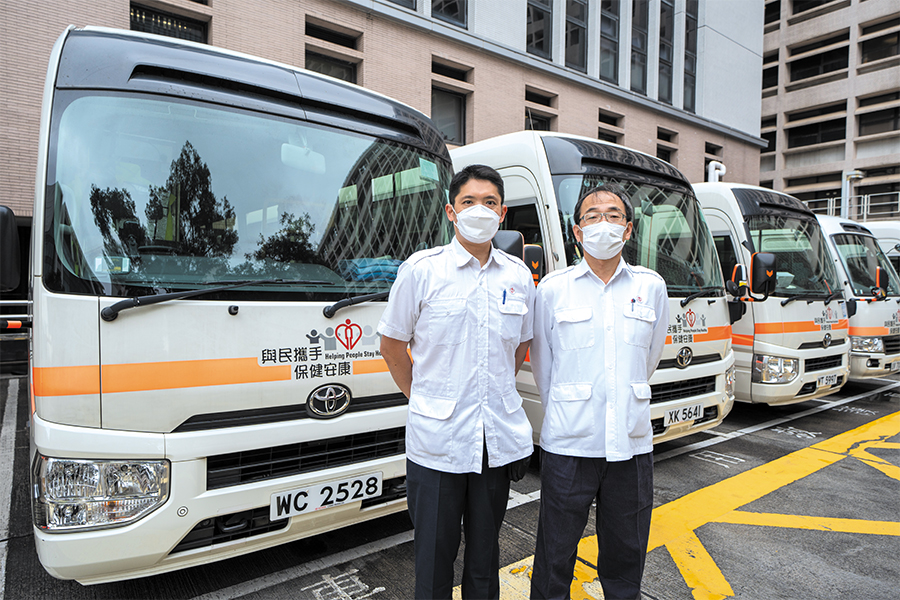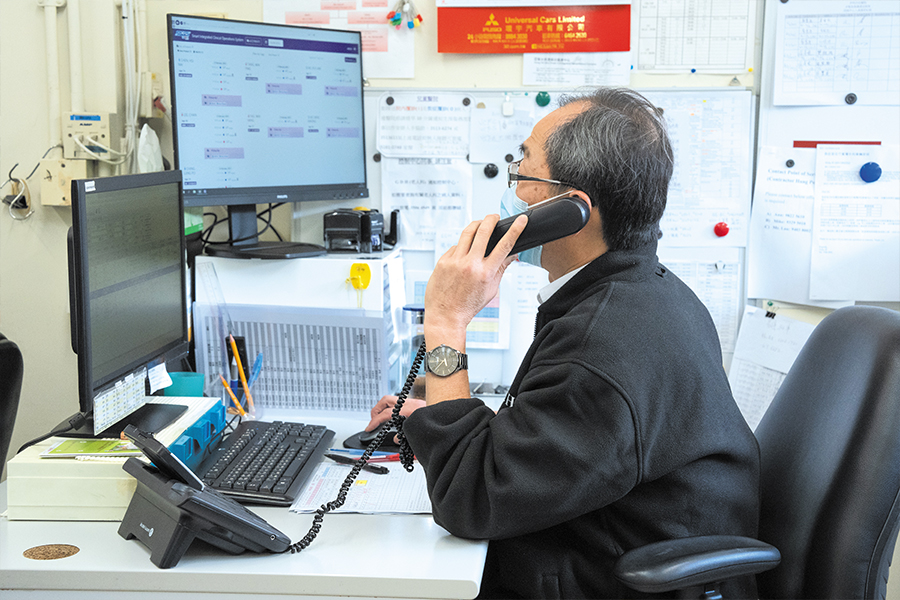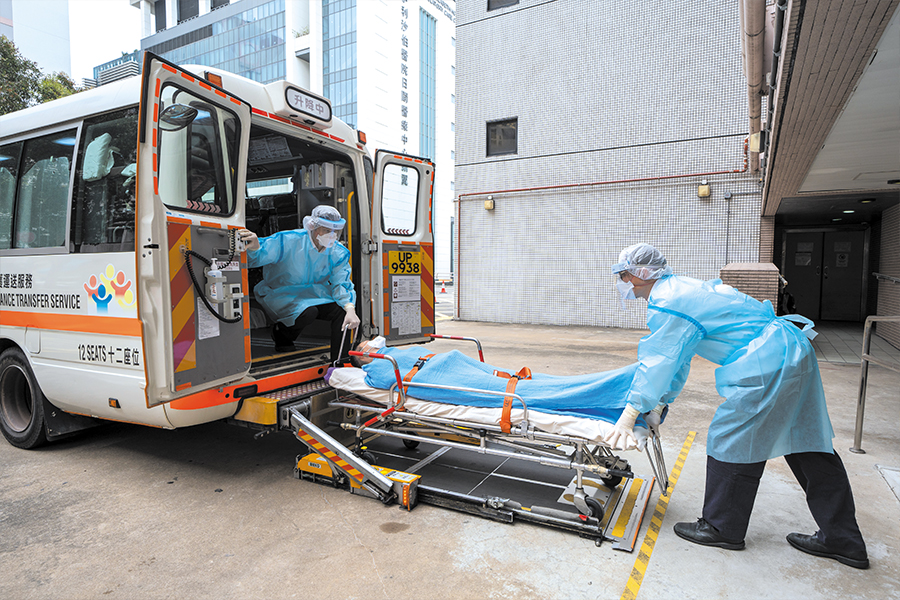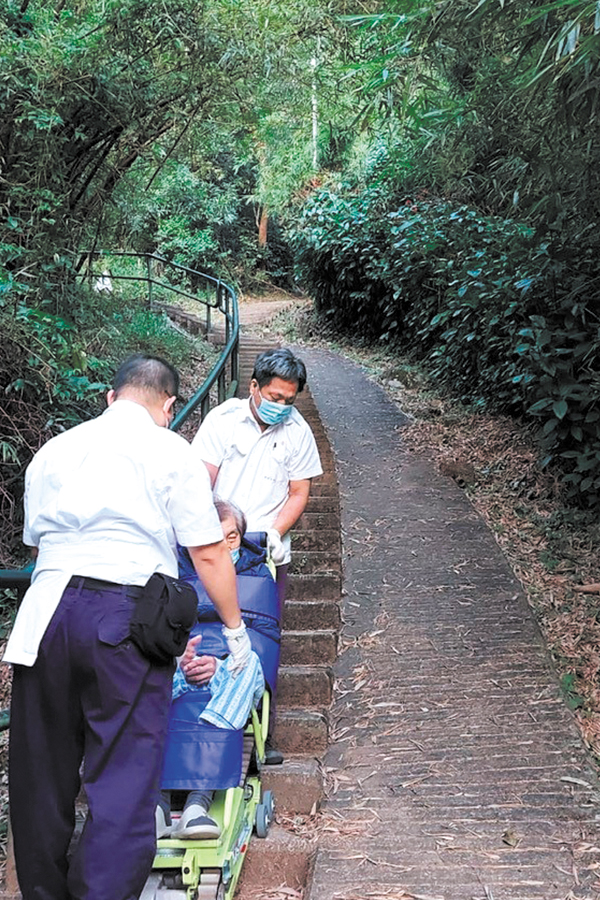Entrusted with transporting COVID-19 patients
 “During the fifth wave of the epidemic, we all wish to vacate beds for severely ill patients and transport patients with mild symptoms to isolation facilities as quickly as possible,” Lam Wa-piu (Uncle Piu) and Tsang Po-wing (Po-wing), Patient Care Assistant II of Non-Emergency Ambulance Transfer Service (NEATS) at Queen Elizabeth Hospital (QEH) shared the same goal.
“During the fifth wave of the epidemic, we all wish to vacate beds for severely ill patients and transport patients with mild symptoms to isolation facilities as quickly as possible,” Lam Wa-piu (Uncle Piu) and Tsang Po-wing (Po-wing), Patient Care Assistant II of Non-Emergency Ambulance Transfer Service (NEATS) at Queen Elizabeth Hospital (QEH) shared the same goal.
Uncle Piu has been a member of the NEATS team at QEH for more than 10 years. He worked mainly in the team’s control room, assisting supervisors to deploy vehicles, liaising with different departments and wards and confirming the information before handing it over to the vehicle team for follow-up. His teammate Po-wing is one of the NEATS team drivers.

Hard to beat extreme temperatures in full PPE
The NEATS team is usually responsible for transporting patients during their admission, discharge, transfer to another hospital and follow-up treatment at specialist outpatient clinics. However, during the fifth wave of the epidemic, they were willing to go the extra mile in transporting the escalating number of COVID-19 patients to isolation facilities. The team at QEH has more than 100 members and was divided into two groups during the epidemic with one group dedicated to transporting COVID-19 patients.At the peak of the outbreak, the working hours of the team greatly increased compared with normal days, and many team members had to work overtime until midnight to cope with the surge in demand. Uncle Piu joined the frontline at that time. “It was the most memorable when all the elderly residents of a residential care home in Kwai Chung had to be evacuated to the Community Treatment Facility at AsiaWorld-Expo last year before the Chinese New Year,” he recalls. “I waited outside AsiaWorld-Expo from about 11 pm until 2 am when all the residents had been admitted.” NEATS team members went one step further and prepared disposable space blankets and diapers for patients in case of any emergencies, he says. Fortunately, the admission process went smoothly then.
Some team members would stay in hospital quarters overnight and continue their work the next day during the epidemic. Po-wing found it the most challenging to work in extreme temperatures. During the fifth wave, the temperature on the coldest days was just 10°C, while at the hottest times, the temperature could reach 35°C or 36°C. Team members had to work in full personal protective equipment, leaving them pouring with sweat.

Easing the pressure on frontline staff
NEATS team members were gradually infected during the worst times of the COVID-19 outbreak and Uncle Piu and Po-wing say they were constantly worried about catching the virus. Due to their awareness and proper infection prevention measures, both of them and their families avoided the virus.“Healthcare professionals work very hard, and working alongside your colleagues in hospital is like being surrounded by your family,” reflects Uncle Piu, who adds that he hopes the work of the NEATS team eased the pressure on frontline medical staff.
